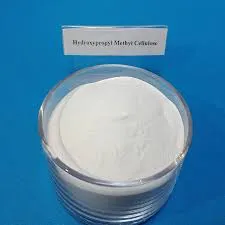
Dec . 11, 2024 18:41 Back to list
hpmc for wall putty
Exploring HPMC for Wall Putty A Game Changer in Construction Materials
Hydroxypropyl Methylcellulose (HPMC) is increasingly gaining attention in the construction industry, particularly in applications like wall putty. As a versatile and effective additive, HPMC plays a pivotal role in enhancing the performance and durability of wall putty formulations, making it a preferred choice among construction professionals.
What is Wall Putty?
Wall putty is a white cement-based material used to fill in imperfections on surfaces, providing a smooth and even base for paint application. It serves several critical functions in the construction industry, such as improving aesthetics, enhancing durability, and offering a protective layer against environmental factors. The quality of wall putty is essential, as it directly affects the final finish of painted walls.
The Role of HPMC in Wall Putty
HPMC is a cellulose derivative that has excellent water retention, adhesive properties, and film-forming capabilities. These properties make it an invaluable component in wall putty formulations. Below are some of the primary benefits of using HPMC in wall putty
1. Improved Workability HPMC enhances the workability of wall putty, making it easier to mix, spread, and apply. The improved consistency allows applicators to achieve a smoother finish without the risk of lumps or uneven surfaces.
2. Water Retention One of HPMC's notable attributes is its ability to retain water. This feature is crucial for maintaining the optimal level of moisture during the setting phase. Effective water retention helps prevent cracking and ensures that the putty adheres properly to the surface, resulting in a longer-lasting finish.
hpmc for wall putty

3. Increased Adhesion HPMC promotes strong adhesion between the putty and the underlying surface, reducing the chances of delamination or flaking over time. A robust bond ensures that the putty remains intact even under varying environmental conditions.
4. Enhanced Flexibility As a flexible material, HPMC helps wall putty withstand minor movements in walls due to temperature changes, humidity, or structural shifts. This flexibility reduces the likelihood of cracking, providing long-term protection and durability.
5. Control of Open Time HPMC allows for better control over the “open time” of wall putty, which is the period during which the material remains workable before it begins to set. A longer open time can be advantageous, especially in larger applications where more time is needed for smoothing and finishing.
6. Eco-friendly HPMC is a non-toxic, biodegradable product that is safe for both construction workers and the environment. Its use aligns with the growing demand for sustainable construction materials, making it a responsible choice in modern building practices.
Conclusion
The integration of HPMC in wall putty formulations marks a significant advancement in construction material technology. Its multifaceted benefits—ranging from improved workability and adhesion to water retention and flexibility—underscore its role as an essential additive in achieving superior quality wall finishes. As the construction industry continues to evolve, the demand for high-performance materials like HPMC will likely increase, driving innovation and leading to better building practices.
As construction firms seek to optimize their products for performance, durability, and sustainability, HPMC stands out as a proven solution in wall putty applications. By leveraging its properties, professionals can ensure that their projects not only meet aesthetic standards but also withstand the test of time, ultimately contributing to the longevity and resilience of buildings.
-
Versatile Hpmc Uses in Different Industries
NewsJun.19,2025
-
Redispersible Powder's Role in Enhancing Durability of Construction Products
NewsJun.19,2025
-
Hydroxyethyl Cellulose Applications Driving Green Industrial Processes
NewsJun.19,2025
-
Exploring Different Redispersible Polymer Powder
NewsJun.19,2025
-
Choosing the Right Mortar Bonding Agent
NewsJun.19,2025
-
Applications and Significance of China Hpmc in Modern Industries
NewsJun.19,2025







